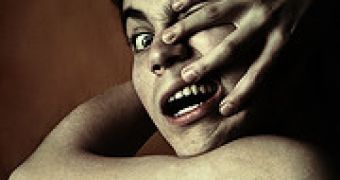We sometimes lose control, that is our mind goes wild and we do not recognize ourselves. But in the case of the alien hand syndrome (AHS), you're really cannot control your own body movements. This rare neurological disorder induces hand movement without the person being aware of what is taking place or having control over the action.
The patients may sometimes reach for objects and handle them without intending to do so, even to the point where they have to use the healthy hand to restrain the movements of the "alien" hand. A new research detected the brain areas involved in both voluntary and involuntary movement and discovered that neural activity was limited to the primary motor cortex during the involuntary motor activity seen with AHS.
The Swiss team at the University Hospital in Geneva, Switzerland, investigated the case of a 70-year-old right-handed AHS man after he experienced a large stroke in the right parietal lobe. His left hand presented normal motor function, with just slight weakness and clumsiness, but with an advanced sensory loss.
His alien movements were unconscious grasps with his left hand, sometimes not even noticed as the patient also displayed mild left visual neglect (he was unaware of the events in the left visual field, despite the visual pathways being intact), linked to the stroke.
The team made two functional MRI tests in which the patient accomplished simple motor tasks that permitted them to compare similar left-hand movements executed both voluntary and involuntary. Comparing periods with AHM with those of resting, the team discovered that the primary motor cortex was selectively activated, with increased activity as AHM intensified.
Voluntary movements turned on the primary motor cortex, but other brain areas, too, were activated. They increased significantly the activity in the contralateral primary motor cortex and the bilateral premotor areas. Right-hemisphere primary motor cortex activity was similar during conscious and alien left hand movements.
"Supplemental motor area regions on both sides were activated by left more than right movements, which suggests a greater degree of motor preparation and control when moving the affected hand, according to the authors. To our knowledge, these fMRI results reveal for the first time the neural correlates of AHM," wrote the authors state.
The new research connected for the first time AHM with highly selective and isolated activation of the contralateral primary motor cortex. As voluntary and AHM movements activated the same motor cortex, this means that conscious and unconscious motor activity requires the same brain structures.
"while M1 [primary motor cortex] may code for limb movement planned by parietal systems, only activity in the latter (but not the former) may mediate conscious experience of motor intentions. These data open new perspectives for the comprehension of neurological and neuropsychiatric disorders associated with abnormal motor control or abnormal awareness of action, such as utilization behavior, phantom limb, anosognosia [in which a person suffers a disability due to a brain injury but is unaware of it], or delusions of control in schizophrenia."

 14 DAY TRIAL //
14 DAY TRIAL //